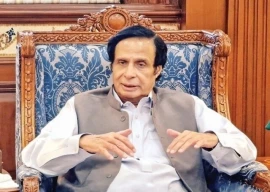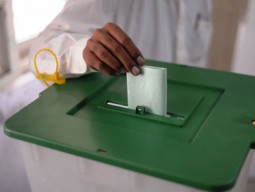
KOHISTAN: One of the poorest and most isolated districts of the country, Kohistan’s adult literacy rate is believed to be the lowest in Khyber-Pakhtunkhwa (K-P) – 11% for men and less than 1% for women, according to education department officials.
According to K-P’s Board of Statistics, Kohistan showed 90.4% participation rate at the primary level for the year 2011-2012. Despite what official figures show, realities on the ground paint a very different picture. Only 3% of girls primary schools and 38% of boys primary schools are functional across the district, officials say.

Residents, social activists and government officials have their own take on what is the leading cause behind these dismal numbers. However, all agree that something needs to be done to address education opportunities, which seems particularly discriminatory towards girls.
“According to my knowledge, not a single government girls school is functional in the district at present,” said an official from the education department. Requesting anonymity, he seemed doubtful that even 11 out of 365 girls primary schools are fully operational.
Dasu resident Saeed Khan attributed low attendance – which often results in schools closing down – to the level of poverty in the district. Livestock is a major source of income for villagers and during the harsh winters they descend to the plains. On the other hand, in the summer the heat prompts villagers to move to higher altitudes. These mobility patterns have an adverse effect on primary schools based in certain villages. Many of them close down because children have moved elsewhere.
Shamsur Rehman, a social activist from Komela, said the political affiliation of the education department officials was the reason why so many schools remained closed. According to him, the education department often builds schools on donated land in exchange for certain benefits granted to the landowner, including job appointments. Feasibility is often overlooked and government resources are wasted this way, said Rehman.
As a result, school buildings are used by teachers or individuals with political clout for their own benefit. In these cases and others where attendance was very low, the government is forced to close down the schools.
Teachers receiving salaries despite schools being closed was another problem. Rehman gave the example of the criminal action taken against teachers and senior officials of the district when over a hundred ghost schools were discovered last year.
In February, at least 16 female teachers were suspended in Kohistan for being absent without informing the school administration.
“PTI’s government should declare an education emergency in Kohistan rather than in settled districts,” said Rehman, adding the area has been marginalised a lot in recent decades. “The low level of literacy is what’s driving poverty and underdevelopment in a district that is rich in natural resources.”.
Another villager, Muhammad Farooq, backed Rehman’s claims regarding the politics of building schools. He accused the education department of approving the feasibility of a school using inflated population numbers. “There are two primary schools for boys in Dasu within a radius of half a kilometre. There are only fifty school-going children in this area,” he said.
Mehmood is the circle in charge of around 135 schools in Dasu. When he assumed this position last year, 75% of schools were non-functional. “I had to take disciplinary action against over 300 absentee teachers,” Mehmood said.
According to him, 40% of schools remain closed at present due to their inaccessibility. Mehmood agreed with Shamsur Rehman’s claims that some schools were constructed by local politicians who used them to appease supporters by granting them the positions of watchmen or teachers. He claimed that children deprived of primary education due to their local schools being shut down were transferred to buildings located in more accessible areas.
Sub-divisional Education Officer Tanvir Ahmed confirmed there are only 11 functional girls primary schools (out of 375) and 300 functional boys primary schools (out of 795). Despite the incriminating numbers, he expressed his resolve to improve the situation and help literacy in the district.
Published in The Express Tribune, April 18th, 2014.




























































COMMENTS (1)
Comments are moderated and generally will be posted if they are on-topic and not abusive.
For more information, please see our Comments FAQ